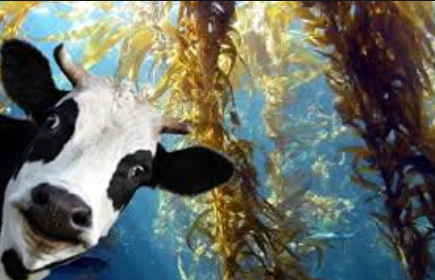Agriculture Undersecretary Deogracias Victor B. Savellano is eyeing the processing of seaweed as the best alternative but cost-efficient feed for livestock and animals to solve the continuing price hike of commercial feeds in the market.
“In the future, we are looking at the conversion of seaweeds as feeds for our livestock to relieve the local animal raisers from the high cost of commercial feeds in the market,” he said.
“We are tapping the expertise of Mr. Lionil Henri Valentin Dabbadie, the country representative of the Food and Agriculture Organization (FAO) of the United Nations, for the exploration of the making of seaweeds as commercial feeds for farm animals and livestock.”
Savellano, Department of Agriculture (DA) undersecretary for livestock, said that the country has abundant seaweed resources that grow in its coastal waters whose length is one of the world’s fifth longest. Seaweeds are relatively cheaper and are very rich sources of protein.
Savellano is also an oversight official for DA’s livestock and poultry feeds development and of the National Tobacco Administration (NTA) along with being alternate chairperson–designate to the NTA Governing Board.
Seaweed is a sustainable source of macronutrients, particularly dietary fiber, and micronutrients to animal feed. It provides several antioxidants which can increase the animal’s longevity and may lower the risk of infections. There are three main reasons to use seaweed in poultry feed – improve animal immune status, decrease microbial load in the digestive tract, and raise beneficial nutrient content on the meat and egg.
In the recent celebration of the World Food Day, Savellano said that aside from processing the seaweeds as animal feeds, he is also looking at the production of native pigs and native chicken which are easier to raise and require commercial feeds with lesser cost.
“We need to go back to the basics and the traditional way of raising our livestock so we can augment our budget for food for our family,” he said.
Considering that corn accounts for 80% of feed formulation, the agency is working on corn planting at the former sugarcane plantation in Western Batangas following the closure of a Batangas sugar mill. This is to ensure the livelihood replacement of the affected sugarcane farmers and to help provide the yellow corn requirement for animal feed production.
According to Savellano, these initiatives are in in line with the three marching orders of His Excellency and concurrent agriculture secretary, President Ferdinand R. Marcos, Jr. to the different units of the agency stated in an acronym: VAM means: Volume where food production will increase five-fold; Affordable price of foods in the market; and Margin or a reasonable income for the livestock raisers.
“These are some of our agency initiatives to achieve the ultimate goal of President Ferdinand R. Marcos, Jr. of having more foods produced but affordable for every Filipino,” Savellano said. (PR)
Photo caption: Feeding cattle with seaweeds lessens emission of greenhouse gas into the atmosphere (Credit- Steemit.com)

